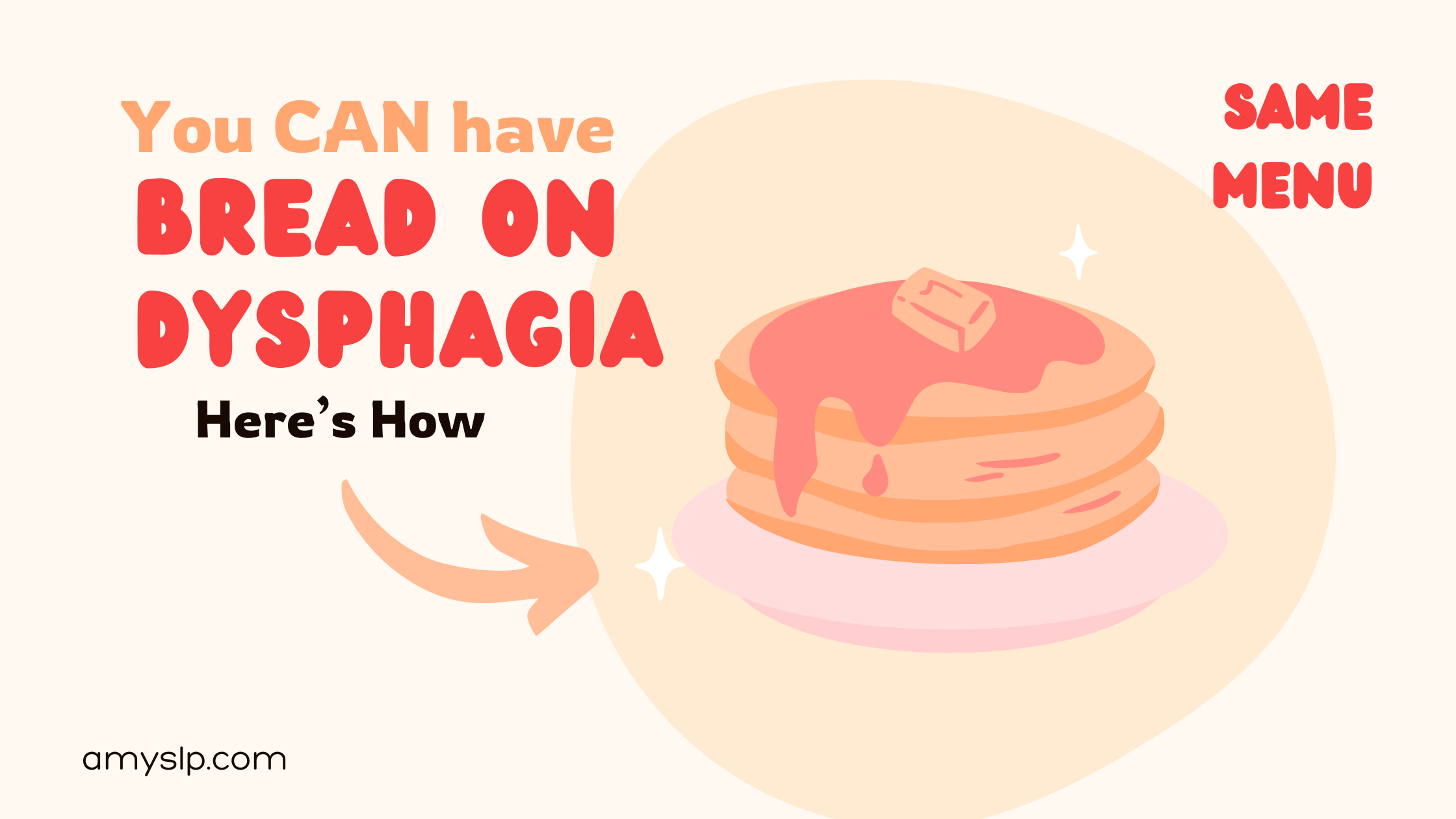Bread is one of the most common comfort foods in the world, but it’s also one of the trickiest for people with swallowing or chewing difficulties. On its own, bread tends to crumble, stick, or form dry lumps that can be unsafe. That’s where the pregelled bread technique comes in.
Pregelling transforms bread into a softer, safer base that is suggested for multiple different diet texture levels, from pureed meals to soft and bite sized textures. With a few simple steps, you can turn a slice of bread into something moist, cohesive, and safe to swallow while still tasting familiar and delicious.
This article refers to a system for organizing modified diet textures, the International Dysphagia Diet Standardization Initiative, or IDDSI. If you are unfamiliar with IDDSI levels, check out my intro post here.
What Is Pregelled Bread?
Pregelled bread is bread that has been soaked or softened in liquid to create a moist, cohesive texture. Instead of crumbling apart, the bread holds together and blends smoothly with other ingredients.
This technique is especially important because bread must be modified at most IDDSI levels:
Level 4 (Pureed): bread can be pregelled and blended into a smooth base.
Level 5 (Minced & Moist): pregelled breadcrumbs are a quick and simple way to help fit the requirements for no biting and minimal chewing.
Level 6 (Soft & Bite-Sized): pregelled
Level 7 (Easy to Chew): bread can be moistened enough to prevent crumbling but still recognizable as bread.
Transitional Foods: some pregelled breads can also work if baked or dried into items that soften quickly in moisture, but it can require extra time or tools to achieve.
While there are some common recipes that use pregelling as a step, like dredging toast for French toast or soaking cookies in coffee for tiramisu, it is still a technique that has stumped some of my dysphagia home cooks.
How to Pregel Bread at Home
You don’t need special tools: just a slice of bread, a safe liquid, and a little time.
The first step is to choose your bread: Soft, plain breads (white, wheat, brioche) work best. Avoid thick crusts, seeds, or grains.
Pick your liquid: Broth, milk, water, or even juice can all be swapped, depending on the flavors of the recipe it will be a part of.
Soak: Place the bread in a shallow dish and pour over enough liquid to cover, or spray with a spray bottle until fully saturated. Let it absorb until the texture is moist but not falling apart. I recommend for thick slices to monitor and flip halfway through to ensure even moistening.
Check the texture:
For pureed dishes → blend until completely smooth, then using a fork, scoop a bite onto the tines. The pureed bread should be able to sit on top without dripping continuously through the space between the tines. Pressing the fork into the surface of the puree, it should leave an imprint when remove
For minced/soft levels → mash or chop until the pieces are uniform and moist.
Use in recipes: Mix into casseroles, form into patties, or layer into desserts.
Safety tip: Always test the texture before serving. Bread should not crumble, feel dry, or form sticky lumps.
Where to Use Pregelled Bread
Pregelled bread is a base technique that shows up in all kinds of recipes. Once you master it, you’ll find it everywhere:
Desserts: Easy to Chew Apple Cake: Pregelling with the sauce keeps this cake slices moist and tender.
Comfort Meals: Minced & Moist Chicken Broccoli Cheddar Pot Pie uses broth and steaming to prevent crust from crumbling.
Snacks: Minced & Moist Twice-Baked Potatoes uses pregelled breadcrumbs to help bind the filling into cohesive bites.
Explore all of my IDDSI-friendly bread recipes for more ideas.
Troubleshooting and Variations for Pregelling
Is your bread soggy with extra liquid dripping? Use less liquid or a shorter time submerged.
Is your bread product too fragile for moving in and out of the liquid? You can use a spray bottle to moisten, being sure that there are no additional liquids remaining at the time of serving.
Is your bread too dry? You may want to consider a thinner slice, or using breadcrumbs or cubes to help expose more absorbent area to the liquid.
For savory recipes, some of my favorite gelling liquids are broths, tomato/V8 juice, and milk for some extra richness.
When I am making a sweet recipe, fruit juices, yogurts, or coffees/teas can add additional layers of flavor while making meals accessible for everyone.
Pregelled bread might sound like a small adjustment, but it makes bread based foods safe, versatile, and enjoyable across IDDSI diet levels. Once you learn the method, you can apply it to everything from sandwiches to cakes, making familiar recipes safe to enjoy again.
If you’re just getting started with texture modified cooking, this is one of the most valuable techniques to master. Comment below any questions or share your favorite pregelled recipes below!
Every recipe here is designed for texture sensitive eaters: from dysphagia to dental issues to picky eaters. Get recipe roundups and practical tips by joining the mailing list.

Leave a Reply